 |
In this ambitious EIC Transition project we aim at developing the laser of our dreams: narrow and stable everytime you push the ON button. The project is a joint effort between the Ba+/Li group and the companies SILENTSYS, IDIL and A8. They will help us turn our ideas into a real product. We are looking for motivated people to join us, contact us for open positions! |
 |
Thanks to bando Trapezio we were able to test new technical advancements on our patented laser design in collaboration with Silentsys. We could reach narrow linewidths (<<1kHz) with minimal effort. More upgrades are yet to come, so stay tuned! |
 |
Our work on orientational melting of ion crystals is now published on Physical Review Letter! We studied the peculiar melting of our 2D crystals: the loss of crystallization along the angular direction and its dependence on particle number and impurities reveals the mesoscopic character of the observed transition. Our work paves the way to studies of thermodynamics of small systems and of quantum rotors. Read more on PRL! L. Duca, et al. |
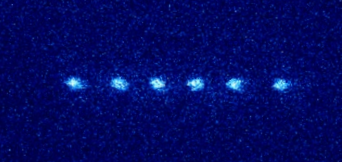 |
Happy to announce the first ion crystals of Ba+ observed in our unconventional ion trap. Congrats to all the people that worked on the project! |
 |
Cooling neutral atoms in optical traps can be a difficult task under some experimental conditions, like when optical trapping potentials are state-dependent. We report on a theoretical study showing that cooling can be achieved even if the internal states of the atoms experience different potential depths as long as a well-tailored frequency sweep is applied to the cooling laser. We develop a master rate equation and a Monte Carlo simulation for atoms of Li and Yb trapped in optical lattices and tweezers and we find that the average occupation number of the vibrational levels is drastically reduced under feasible experimental conditions. Our findings provide an alternative cooling scheme that can be applied in principle to any particle that is optically trappable, e.g. atoms, molecules or ions, and can provide a faster route to cooling atoms to condensation or degeneracy. F. Berto, et al. |
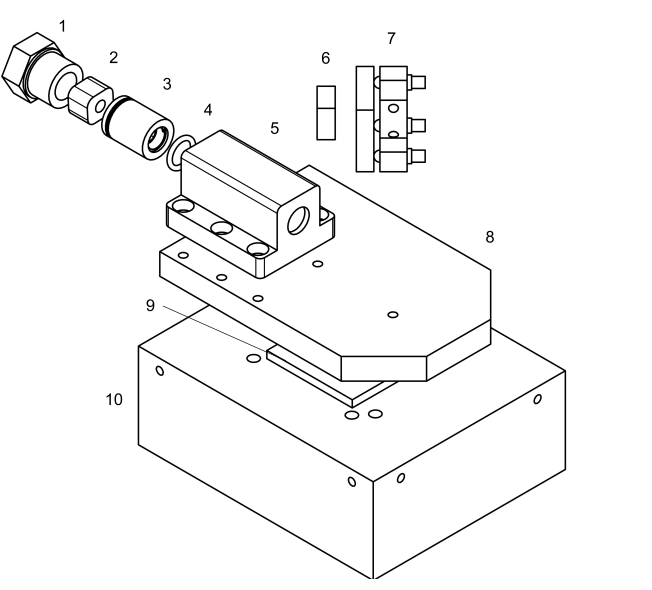 |
We report on our patented Littrow-type external cavity diode laser (ECDL) in which the coarse wavelength adjustment obtained via the rotation of a diffraction grating is decoupled from the fine tuning of the cavity modes done with changes in the external cavity length. This design improves the robustness of the ECDL emission against misalignment and hysteresis, even for the case of long external cavity lasers typically employed in optical clock experiments. L. Duca, et al. |
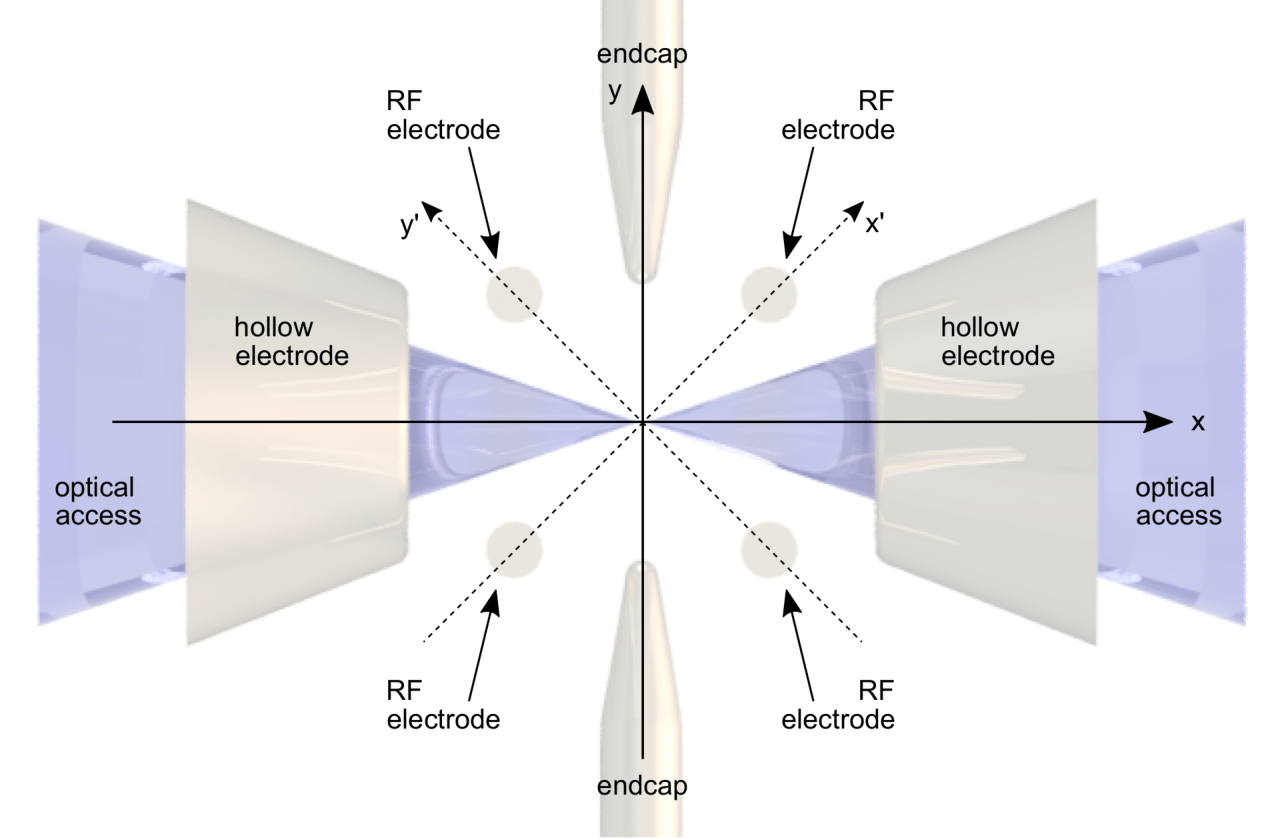 |
One of the main limitations in state-of-the-art atom-ion experiments is represented by the micromotion component of the ions’ dynamics in a Paul trap that prevents atom-ion mixtures from undergoing a coherent evolution. Overcoming this problem requires a completely new approach to ion trapping. Our solution is a novel micromotion-free electro-optical trap based on the combination of an optical and a static electrostatic field. In this paper, we describe the geometry and the assembly of an electro-optical trap explicitly designed for experiments with atom-ion mixtures, in our case a mixture of Barium ions and Lithium atoms. We also report the results of the numerical simulations performed on the electric and thermal behavior of the trap, providing fundamental information for establishing the trapping potential and the stability region. E. Perego, et al. |
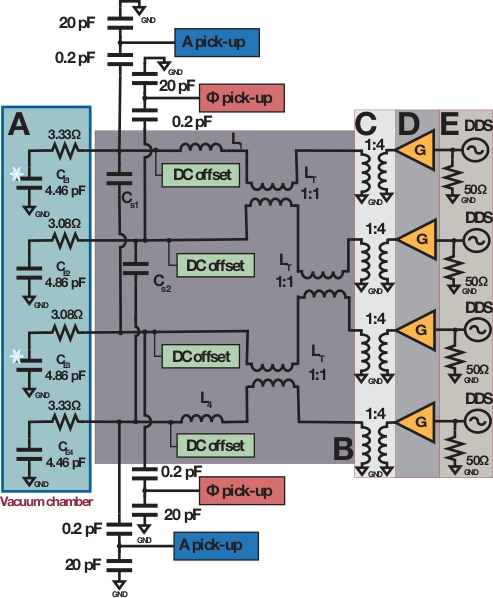 |
Analogously to a beating heart, the electrodes of an ion trap need to receive synchronous RF electric signals with a precise frequency and phase in order to function properly. We developed a compact RF drive for the electrodes of our ion trap composed of interdependent RLC circuits resonating at iso-frequency, iso-amplitude and with proper phase opposition. The circuit provides an amplification factor of 200 and it allows ions' micromotion correction via feedback loops. A. Detti, et al. |
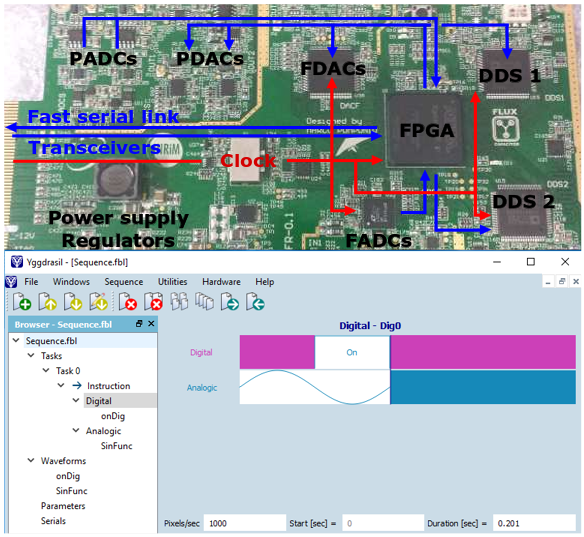 |
Modern experiments with complex quantum systems should ideally be managed by a control apparatus capable of carrying out complex tasks, such as self-optimization procedures and realization of feedback loops acting on different channels. To achieve these goals, we developed a novel control system formed by both a hardware and a software part. Specifically, the hardware is based on a net of interconnected FPGAs able to process incoming and outgoing data directly on board, whereas the software is designed to exploit the capabilities of such a general hardware platform and to be easily expanded to manage other devices or instrumentation changes. E. Perego, et al. |
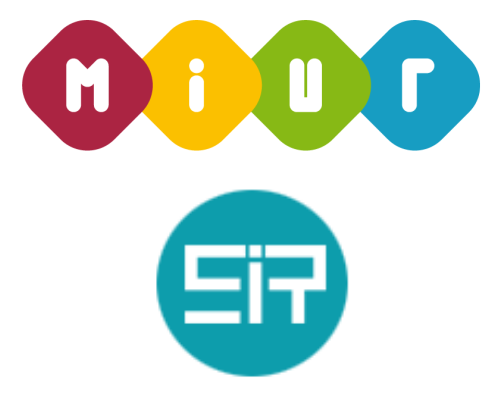 |
Carlo Sias has been awarded with a SIR ("Scientific Independence of young Researchers") grant from MIUR ("Italian Ministry for Education and Research") for the development of the Ba+/Li experiment! |
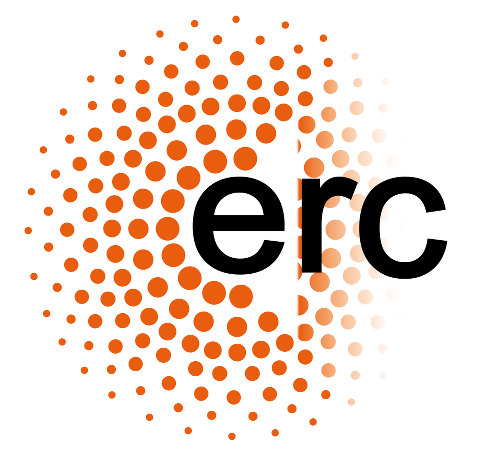 |
Carlo Sias has been awarded with an ERC Starting Grant! The title of the project is "PlusOne: An ultracold gas plus one ion: advancing Quantum Simulations of in- and out-of-equilibrium many-body physics”. Congratulations! |
 |
Ultracold atoms and trapped ions are among the most powerful tools to study quantum physics. On the one hand, ultracold neutral atoms provide an exceptional resource for studying many-body physics, since a relatively large number of particles, typically from a few tens of thousands to several million, can be brought to quantum degeneracy. Quantum gases have been used extensively in recent years to realize quantum simulations of fundamental models of condensed matter, the solutions of which are often too complex to be computed. On the other hand, trapped ions provide a great resource to explore the physics of small quantum systems. They provide one of the most successful hardwares for a quantum computer, and clocks made of trapped ions are among the most precise. Moreover, trapped ions have been recently used as a quantum simulator, making the path of the two subjects of ultracold atoms and trapped ions even more entangled. Only recently, though, ultracold atoms and trapped ions have been brought together in a single experimental setup. The progress in this new research field has been extremely fast, and now about ten groups in the world have built or are currently building experimental setups in which different pairs of atoms and ions are used together. piccola sito The reason for this interest is based on the several innovative ingredients that are available – many more than in traditional atomic physics experiments. At the fundamental level, atoms and ions interact through a potential that is much more long-ranged with respect to the interaction between ultracold atoms (scaling with R-4 instead of R-6, where R is the internuclear separation), and one can exploit the different techniques to manipulate atoms and ions to exert more control in the hybrid system. With this control at hand, atom-ion quantum systems have been proposed to advance quantum simulation, quantum computation, and quantum chemistry. In our project, we plan to realize a new-generation atom-ion machine in order to realize new quantum simulations of a many-body system in the presence of one or more localized impurities. With this setup, we plan to investigate fundamental atom-ion interactions in the ultracold regime, and to use these controlled interactions to realize a platform for investigating out-of-equilibrium quantum systems and quantum thermodynamics. |


